Summary Overview
Cross-Border Trucking Market Overview (Malaysia, Thailand, Singapore)
The cross-border trucking market across Malaysia, Thailand, and Singapore plays a crucial role in the movement of goods within Southeast Asia, driven by robust trade activities and regional economic integration. With the rise in e-commerce and global supply chain demands, cross-border trucking has seen significant growth. This market is vital for industries such as automotive, electronics, food and beverage, and pharmaceuticals, all of which rely heavily on the seamless flow of goods between these countries. The introduction of technological advancements and regulatory improvements in logistics is shaping the future of this market, creating new opportunities and challenges.
Our report provides a comprehensive analysis of the current market trends, highlighting opportunities for cost savings through optimized logistics and enhanced route management. Additionally, the report outlines future challenges in supply chain operations, especially those related to border regulations, customs, and transportation infrastructure. Digital tools and data analytics play a pivotal role in improving route planning, managing fuel costs, and optimizing fleet operations.
Market Size and Growth Outlook: • Market Size: The cross-border trucking market in Malaysia, Thailand, and Singapore is projected to reach USD 8.5 billion by 2032, reflecting a compound annual growth rate (CAGR) of about 5.5% from 2024 to 2032.
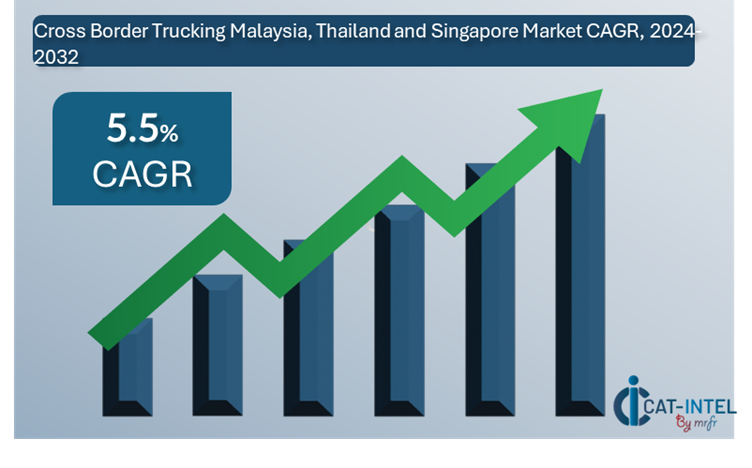
Sector Contributions: Growth in this market is primarily driven by:
-
Logistics and Freight Transportation: The primary sector benefiting from cross-border trucking, especially with the increase in e-commerce and international trade. -
Automotive and Electronics: Increased demand for parts and finished products necessitates the movement of goods across borders. -
Agricultural and Food Products: Cross-border trucking also serves the food supply chain, where timely deliveries are critical.
Technological Transformation and Innovations:
-
Digitalization of Logistics: The rise of digital platforms and AI-driven route optimization has enhanced operational efficiency. This includes improvements in cargo tracking, real-time fleet management, and predictive maintenance of vehicles. -
Sustainability and Green Practices: The cross-border trucking market is also witnessing an increasing focus on eco-friendly practices, such as the adoption of electric trucks and reduced carbon footprints in logistics operations.
Funding Initiatives:
-
Infrastructure Development: Governments in Malaysia, Thailand, and Singapore are increasing investments in transportation infrastructure, improving border facilities, and modernizing truck fleets. -
Government Regulations: Regional trade agreements like the ASEAN Free Trade Area (AFTA) and Customs Union are boosting cross-border trucking efficiency by reducing tariff barriers and simplifying customs procedures.
Regional Insights:
-
Malaysia: The country’s central position in Southeast Asia makes it a major hub for trucking operations, linking trade between Singapore and Thailand. -
Singapore: As a global logistics hub, Singapore benefits from highly advanced transportation networks that streamline cross-border trucking operations. -
Thailand: As the gateway to Indochina, Thailand plays a significant role in regional logistics, with a growing demand for cross-border trucking to support exports and imports.
Key Trends and Sustainability Outlook
Sustainability Initiatives:
- Growing demand for eco-friendly transport solutions, including electric trucks, to reduce carbon emissions. Both the governments of Malaysia and Thailand are working on initiatives to support green logistics practices.
Health Trends:
- Increasing demand for temperature-controlled transportation, especially in the food and pharmaceutical sectors, which requires high standards of cross-border logistics operations.
E-commerce Growth:
- The rise in e-commerce continues to drive the demand for efficient logistics networks. Companies are increasingly relying on cross-border trucking for last-mile deliveries across Malaysia, Singapore, and Thailand.
Growth Drivers:
-
Trade and E-commerce Expansion: The continuous expansion of trade and the increasing popularity of online shopping are significantly boosting the demand for cross-border trucking. -
Infrastructure Development: Improved road infrastructure and border facilities are facilitating smoother and more efficient cross-border trucking operations. -
Technological Advancements: The use of real-time tracking, AI, and IoT devices is making cross-border trucking more efficient, reducing delays, and optimizing routes. -
ASEAN Economic Integration: Strengthened economic integration and trade agreements within ASEAN are facilitating easier border-crossing processes and reducing tariffs for cross-border trucking.
Overview of Market Intelligence Services for Cross-Border Trucking Market (Malaysia, Thailand, Singapore)
Recent analysis indicates that the cross-border trucking market between Malaysia, Thailand, and Singapore is experiencing fluctuations due to changes in fuel prices, border customs, and road infrastructure. To address these challenges, market reports offer detailed forecasts on transport costs, fuel prices, and regulatory changes. Our market intelligence solutions help stakeholders in the logistics industry optimize their operations by offering insights into cost-effective routing, regulatory compliance, and supply chain management.
By leveraging insights from these reports, trucking companies and freight forwarders can effectively manage cost volatility while ensuring the efficient movement of goods. Adopting strategic sourcing and procurement management practices helps mitigate risks and enhances competitive advantages in this evolving market.
Procurement Intelligence for Cross-Border Trucking Market (Malaysia, Thailand, Singapore): Category Management and Strategic Sourcing
In the cross-border trucking market of Malaysia, Thailand, and Singapore, companies are optimizing procurement strategies through spend analysis, vendor performance management, and supply market intelligence. By leveraging strategic sourcing, they are enhancing cost-effectiveness and ensuring timely, high-quality services. The rising demand for freight transport, fuelled by trade agreements and e-commerce growth, drives the need for efficient fleet management, route optimization, and technology integration. With a focus on cost control, risk mitigation, and digital tools like real-time tracking, businesses are staying competitive and improving supply chain efficiency across these key regions.
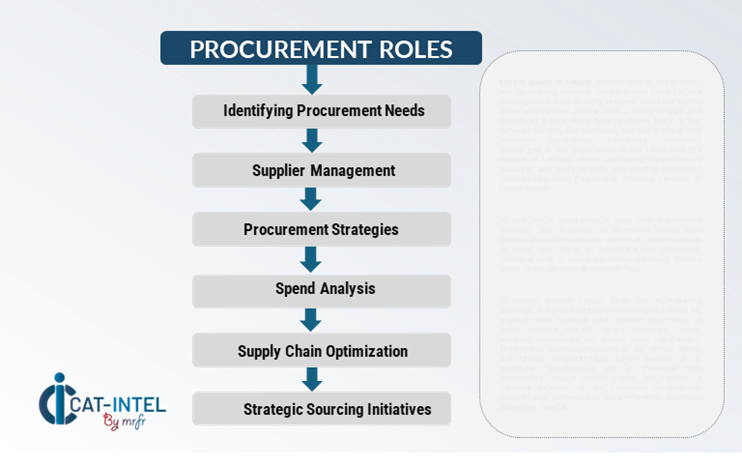
Pricing Outlook for Cross-Border Trucking (Malaysia, Thailand, Singapore) market: Spend analysis
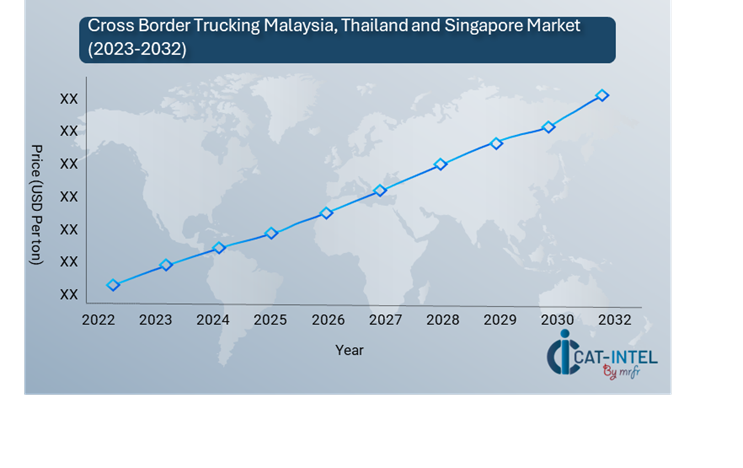
The cross-border trucking market in Malaysia, Thailand, and Singapore is experiencing a dynamic pricing environment influenced by several key factors:
-
Infrastructure Developments: Ongoing investments in transportation infrastructure are enhancing connectivity and efficiency, which can lead to more competitive pricing. -
Regulatory Changes: The implementation of new trade agreements and regulatory frameworks is streamlining cross-border operations, potentially reducing costs and affecting pricing structures. -
Market Demand: The increasing volume of trade and e-commerce activities is driving demand for efficient logistics solutions, influencing pricing strategies. -
Technological Advancements: The adoption of digital tools and automation in logistics operations is improving efficiency, which may lead to cost savings and impact pricing.
Cost Breakdown for the Cross-Border Trucking Market in Malaysia, Thailand, and Singapore: Cost-Saving Opportunities
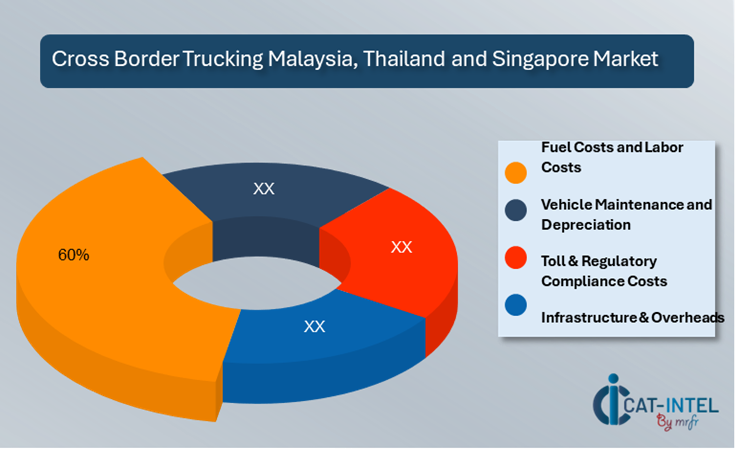
- Fuel Costs (40%)
-
Description: Fuel constitutes a significant portion of operational costs in the cross-border trucking market, influenced by global fuel prices and regional fuel taxation policies. Fuel efficiency and fluctuating prices directly affect overall cost structures. -
Trends: Fuel prices have seen volatility due to global geopolitical tensions and supply chain disruptions. However, companies are investing in fuel-efficient vehicles and adopting green technologies to reduce reliance on conventional fuel sources. The adoption of alternative fuel options such as LNG and electric trucks may reduce long-term fuel costs.
- Labor Costs (XX%)
- Vehicle Maintenance and Depreciation (XX%)
- Toll & Regulatory Compliance Costs (XX%)
- Infrastructure & Overheads (XX%)
Cost saving opportunity: Negotiation Lever and Purchasing Negotiation Strategies
In the cross-border trucking market of Malaysia, Thailand, and Singapore, cost-saving opportunities lie in strategic procurement and negotiation. Long-term contracts with logistics providers and collaborative purchasing offer volume discounts, while route optimization and fuel-efficient technologies reduce operational expenses. Maintenance contracts and predictive maintenance further cut repair costs. Digital platforms enhance fleet management, ensuring efficient deliveries. These strategies help trucking companies’ lower costs while maintaining service quality and compliance across borders.

Supply and Demand Overview of the Cross Border Trucking Market: Demand-Supply Dynamics and Buyer Intelligence for Effective Supplier Relationship Management (SRM)
The cross-border trucking market in Malaysia, Thailand, and Singapore is experiencing growth due to increasing trade, regional integration, and the rising demand for fast and reliable logistics solutions. The demand for cross-border trucking services is influenced by factors such as e-commerce growth, the need for efficient supply chains, and regional economic expansion.
Demand Factors:
-
E-commerce Growth: The rise in online shopping and global trade boosts demand for fast and reliable cross-border trucking services to ensure timely delivery. -
Regional Economic Integration: Economic cooperation within ASEAN, including initiatives such as the ASEAN Free Trade Area (AFTA), increases the need for smooth, cross-border logistics to support trade between Malaysia, Thailand, and Singapore. -
Supply Chain Optimization: Companies are increasingly seeking efficient logistics solutions to reduce costs, requiring dependable trucking services across borders. -
Fuel and Environmental Regulations: Growing concern about fuel consumption and environmental impact pushes for more efficient and sustainable trucking practices.
Supply Factors:
-
Infrastructure Development: Investments in road networks and border facilities in Malaysia, Thailand, and Singapore enhance the efficiency of cross-border trucking, supporting supply capacity. -
Fleet Expansion: The increasing fleet size, with modern trucks and advanced tracking systems, improves the reliability and speed of cross-border trucking services. -
Government Regulations: Border regulations and customs procedures impact the supply of trucking services. Efforts to streamline these processes improve efficiency and reduce delays. -
Market Competition: A growing number of logistics providers in the region increases competition, influencing service levels, pricing, and availability of cross-border trucking options.
Regional Demand-Supply Outlook: Cross Border Trucking Market (Malaysia, Thailand, Singapore)
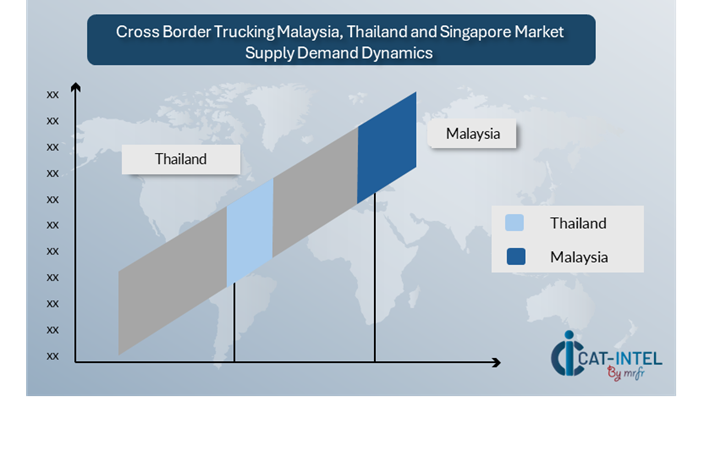
The cross-border trucking market in Malaysia, Thailand, and Singapore is seeing increased demand due to the region’s growing trade, e-commerce, and infrastructure improvements. The demand-supply outlook for the region is characterized by the following:
Malaysia: A Key Player in the Cross Border Trucking Market
-
Strategic Location: Malaysia’s location between Thailand and Singapore positions it as a major hub for cross-border trucking services, facilitating trade between Southeast Asia and global markets. -
Export Growth: Malaysia’s export-oriented economy drives demand for cross-border trucking services, particularly for goods like electronics, palm oil, and natural resources, to regional and international markets. -
Infrastructure Developments: Ongoing upgrades to road networks and port facilities enhance trucking efficiency and enable smoother trade routes. -
E-commerce Demand: Increased consumer demand for fast shipping due to e-commerce growth in Malaysia leads to higher demand for cross-border trucking services. -
Environmental Sustainability: Malaysia is increasingly focusing on green logistics, with efforts to reduce emissions and promote fuel-efficient trucking solutions.
Thailand: Growing Demand and Improved Logistics
-
Expanding Trade and Regional Integration: As part of ASEAN, Thailand benefits from increased trade with neighbouring countries, driving demand for efficient cross-border trucking services. -
Manufacturing Hub: Thailand’s role as a manufacturing hub for electronics, automotive, and consumer goods contributes to the growing need for cross-border logistics to transport goods to regional markets. -
Government Initiatives: The Thai government has invested in improving infrastructure and customs procedures, further facilitating smoother cross-border trucking operations. -
Logistics Innovation: Technology adoption, such as GPS tracking and data analytics, enhances the efficiency and reliability of trucking services in Thailand.
Singapore: The Logistics Gateway
-
International Trade Hub: Singapore's strategic location as a global logistics hub fuels the demand for cross-border trucking services to move goods efficiently between Southeast Asia and the world. -
Advanced Infrastructure: Singapore boasts world-class infrastructure, making it an ideal base for trucking companies serving the entire ASEAN region. -
E-commerce Surge: Rapid growth in e-commerce, with Singapore’s position as a logistics gateway, leads to increased demand for efficient cross-border transportation. -
Sustainability Efforts: Singapore is at the forefront of implementing eco-friendly logistics practices, such as electric trucks and green logistics initiatives, to meet environmental standards.
Malaysia remains a key hub for cross border trucking market and its growth
Supplier Landscape: Supplier Negotiations and Strategies (Cross Border Trucking Market - Malaysia, Thailand, Singapore)
The cross-border trucking market in Malaysia, Thailand, and Singapore is characterized by a diverse supplier landscape that includes trucking service providers, logistics companies, fuel suppliers, vehicle manufacturers, and technology providers. These suppliers provide essential services and infrastructure for cross-border trucking, facilitating the movement of goods between the countries and globally. Supplier relationships are vital for maintaining an efficient supply chain, improving delivery times, and reducing transportation costs.
The supplier landscape is evolving with increasing demand for technology-driven solutions such as route optimization, GPS tracking, and data analytics to enhance efficiency in cross-border operations. Additionally, environmental regulations and sustainability efforts are driving the adoption of green logistics practices, such as fuel-efficient trucks and eco-friendly packaging.
Some key suppliers in the cross-border trucking market for Malaysia, Thailand, and Singapore include:
- Sime Darby Motors
- Tata Motors
- DHL Supply Chain
- Schenker Singapore
- Scania
- Shell
- DB Schenker
- Yusen Logistics
- PTT Group
- Kuehne + Nagel
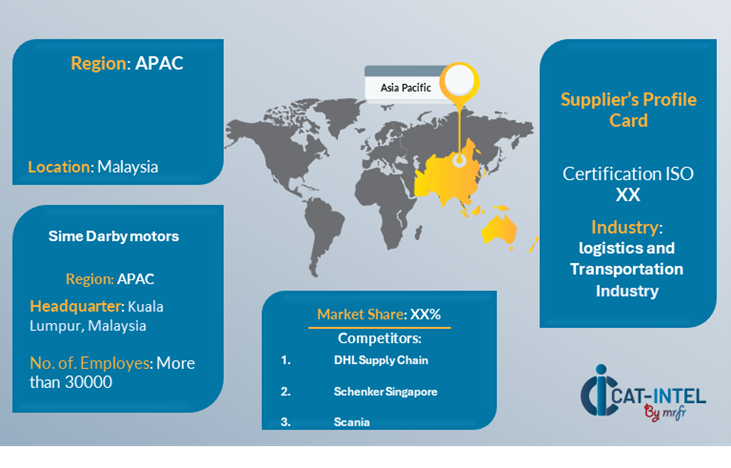
Key Development: Procurement Category significant development
Procurement Category |
Key Development |
Trucking Services |
Growth in cross-border logistics services due to increasing regional trade and demand for faster deliveries. |
Fleet Management |
Enhanced adoption of fleet management technology for tracking, route optimization, and maintenance to improve efficiency and reduce operational costs. |
Fuel Suppliers |
Rising demand for alternative fuels (e.g., LNG, biofuels) as part of sustainability efforts and cost management in the trucking industry. |
Logistics Technology |
Integration of advanced technologies (e.g., IoT, AI) for better supply chain visibility, real-time tracking, and improved decision-making. |
Vehicle Manufacturers |
Increase in demand for fuel-efficient and environmentally friendly vehicles (e.g., electric trucks), spurred by sustainability regulations and cost-efficiency goals. |
Customs and Border Services |
Streamlined border crossing procedures and digitalization of customs processes to speed up cross-border transportation and reduce delays. |
Procurement Attribute/Metric |
Details |
Market Sizing |
The ASEAN Cross Border Road Freight Transport Market is projected with a CAGR of 5.5% expected to grow to USD 8.5 billion by 2032. |
Adoption of Cross-Border Trucking Services |
The rise in cross-border e-commerce and regional trade agreements has significantly increased demand for cross-border trucking services, particularly in Malaysia, Thailand, and Singapore. |
Top Strategies for 2024 |
- Infrastructure Investment: Enhancing transportation infrastructure to improve connectivity and reduce transit times. - Digitalization: Implementing real-time tracking and smart logistics platforms. - Sustainability: Emphasizing eco-friendly practices to reduce carbon footprint. |
Automation in Cross-Border Trucking |
The logistics automation market is expected to grow significantly, improving efficiency, reducing manual intervention, and enhancing operational performance. |
Procurement Challenges |
- Regulatory Compliance: Navigating diverse and complex regulations across borders. - Infrastructure: Limited infrastructure in certain regions can hinder smooth transportation. - Supply Chain Disruptions: Global events can disrupt cross-border trucking schedules and efficiency. |
Key Suppliers |
Major players include DB Schenker, DHL Group, K Line Logistics, Kerry Logistics Network Limited, and Tiong Nam Logistics. |
Key Regions Covered |
Key regions include Malaysia, Thailand, and Singapore, with significant trade flows between these countries and ASEAN markets. |
Market Drivers and Trends |
The growth of cross-border e-commerce, rising trade flows within ASEAN, and investments in transportation infrastructure are key drivers. The shift to digital and automated logistics systems also contributes to market growth. |








